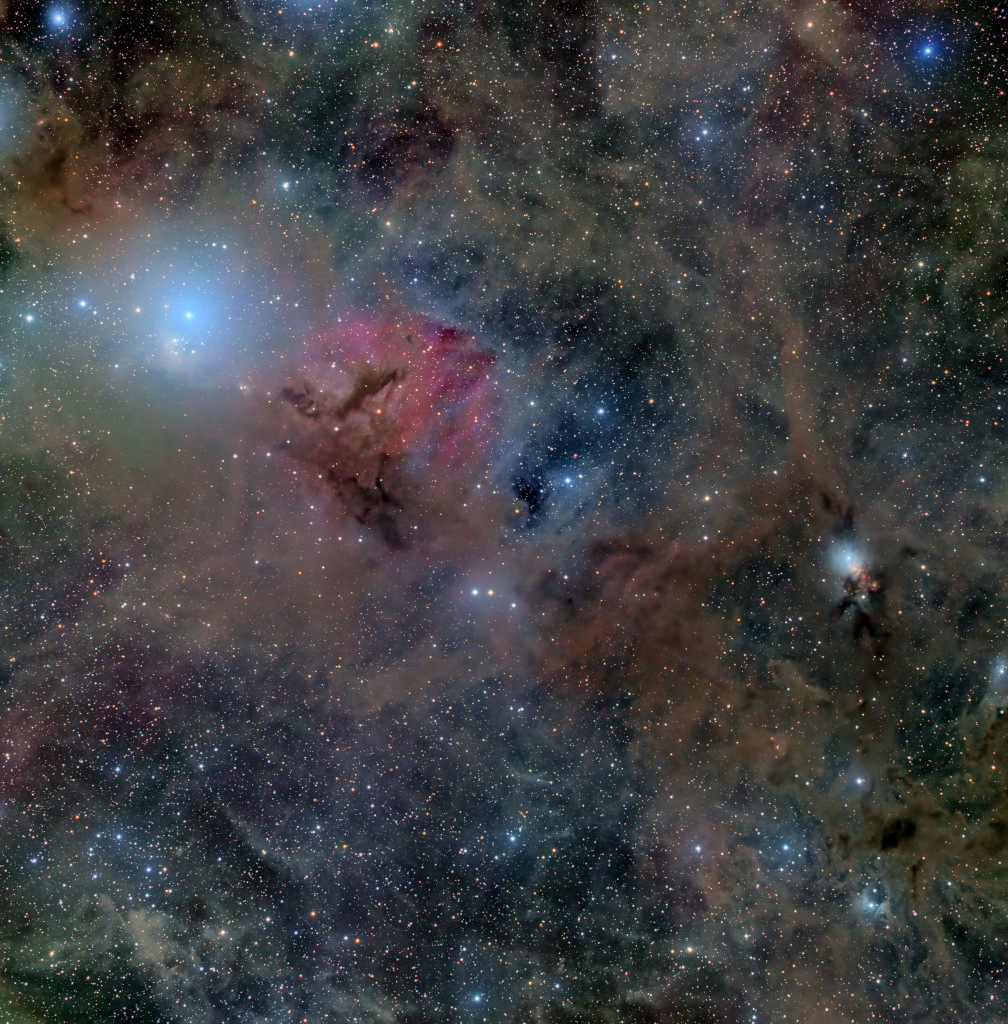2023年1月12日
Stardust in Perseus
Image Credit & Copyright: Jack Groves
Explanation: This cosmic expanse of dust, gas, and stars covers some 6 degrees on the sky in the heroic constellation Perseus. At upper left in the gorgeous skyscape is the intriguing young star cluster IC 348 and neighboring Flying Ghost Nebula with clouds of obscuring interstellar dust cataloged as Barnard 3 and 4. At right, another active star forming region NGC 1333 is connected by dark and dusty tendrils on the outskirts of the giant Perseus Molecular Cloud, about 850 light-years away. Other dusty nebulae are scattered around the field of view, along with the faint reddish glow of hydrogen gas. In fact, the cosmic dust tends to hide the newly formed stars and young stellar objects or protostars from prying optical telescopes. Collapsing due to self-gravity, the protostars form from the dense cores embedded in the molecular cloud. At the molecular cloud’s estimated distance, this field of view would span over 90 light-years.
Tomorrow’s picture: pixels in space
英仙座的星尘
图像提供与版权: Jack Groves
说明: 这片由尘埃、云气和恒星织就的广袤星野,涵盖了英仙座大约6度的天区。在这片绚丽星野的中左上方,可见到很有趣的年轻星团IC 348和邻近的飞鬼星云,以及编录号为巴纳德3与4的不透光星际尘埃云。在图像右侧,可见到另一个活跃的恒星形成区NGC 1333,它周围连接着许多位在850光年远的庞大英仙分子云边缘之卷须状黝黑尘埃。此外,图像视野内也散布着其他尘埃云与散发黯淡泛红辉光的氢气云。而在自身重力的作用下,尘埃分子云内藏的致密核会塌缩形成原恒星。不过在宇宙尘埃的遮掩下,可见光望远镜通常很难窥见其内的新诞生恒星、年轻天体或原恒星。以分子云的估计距离来换算,这片视野的宽度超过90光年。
明日的图片: pixels in space



